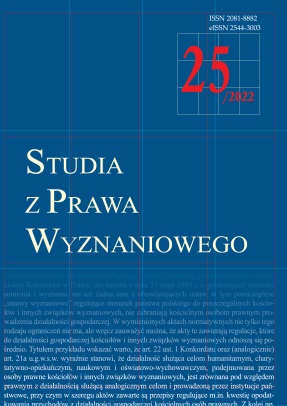Interference with an object of religious worship as a sign of the crime of offending religious feelings in Polish law
Interference with an object of religious worship as a sign of the crime of offending religious feelings in Polish law
Author(s): Krzysztof Wiak, Zuzanna GądzikSubject(s): Law, Constitution, Jurisprudence, Constitutional Law, Criminal Law, Human Rights and Humanitarian Law, Canon Law / Church Law, Court case
Published by: Katolicki Uniwersytet Lubelski Jana Pawła II - Wydział Prawa, Prawa Kanonicznego i Administracji
Keywords: offending religious feelings; object of religious worship; freedom of conscience and religion; justification of art
Summary/Abstract: The paper addresses the recent issue of interference with an object of religious worship in the context of criminal liability for the crime under Art. 196 of the Penal Code (PC). It is based on events known to the public that have been assessed in the context of criminal liability for such an act (e.g., destruction of the Bible at a concert, dissemination of an image of the Mother of God with a rainbow halo, or the chopping down of a roadside cross). The paper discusses the issue of the protection of religious feelings, which is reflected in the criminalization of conduct consisting in insulting an object of religious worship. In particular, attention is paid to the multifaceted view of what an object of religious worship is, including not only its physical (material) form but also its spiritual (metaphysical) aspect. In this regard, an analysis was carried out to answer the question of whether interfering with a certain symbolism and violating the specific canon in which an object of religious worship is presented can constitute the crime of offending religious feelings. It was assumed that, taking into account the subjective aspect of the crime under Art. 196 PC, criminal liability in this respect is possible. The paper also considers the so-called justification of art, which is supposed to lead to the exclusion of the unlawfulness of behaviours that involve artistic expression and are based on the freedom of expression. The paper employs primarily the dogmatic method, and to a limited extent also the historical method.
Journal: Studia z Prawa Wyznaniowego
- Issue Year: 2022
- Issue No: 25
- Page Range: 43-66
- Page Count: 24
- Language: English, Polish

